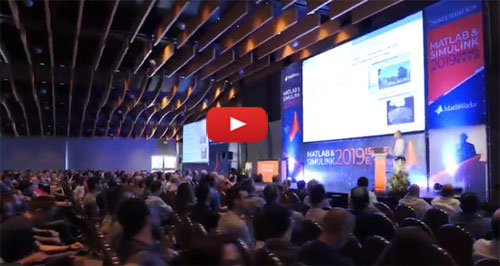צפו בסרטון מכנס
MATLAB AND SIMULINK EXPO 2019
המשתתפים החליפו ביניהם רעיונות, שיתפו בהצלחות ובניסיון שהצטבר והתייעצו כיצד להתמודד עם אתגרים. וכמו תמיד – זה היה המקום להיפגש עם מומחים, שותפים עסקיים ועמיתים לתעשייה.
רשמים, תמונות וסרטונים מכנס:
MATLAB & Simulink ISRAEL EXPO 2019
Developing Smart Embedded Systems with MATLAB and Simulink
אשר התקיים בתאריך 26.5.19, מלון הילטון, תל אביב
תודה לכ-600 מהנדסים וחוקרים, מכ –300 חברות מובילות בתעשייה ומוסדות מחקר ואקדמיה, אשר השתתפו בכנס המקצועי של חברת סיסטמטיקס.
בתאריך 26.5.19 התקיים במלון הילטון, תל אביב כנס טכני למהנדסים ומפתחים בהשתתפות כ-600 מהנדסים שהתמקד במערכות Deep Learning ,AI ופיתוח בגישת Model Based Design לתכנון בדיקה ויישום של פתרונות הנדסיים לאתגרי המחר.
ארגונים רבים משקיעים יותר ויותר בפיתוח מערכות חכמות, הלומדות מהסביבה ומאפשרות פיתוח מהיר אך מורכב ומאתגר יותר. כמענה למגמה זו, חברת MathWorks הרחיבה את הפתרונות שלה לניתוח נתונים הנדסיים וארגוניים, ומאפשרת יכולות מתקדמות יותר בגישת Model-Based Design.
הכנס השנה התמקד בסימן של פיתוח מערכות חכמות – החל משלב רכישת ועיבוד המידע הגולמי, הפקת תובנות בגישת Machine & Deep Learning לצורך פיתוח מערכות אוטונומיות חכמות, אשר מסוגלות להתמודד עם תנאים של אי ודאות.
בחלקו השני של היום ניתן היה לבחור בין שלושה מסלולים מקצועיים לימודיים, בהם דובר על היכולות החדשות והקיימות בכלי הפיתוח ואופן יישומם בתהליך הפיתוח – מאלגוריתם ועד למימוש על חומרה:
- מסלול עיבוד וידאו ותמונה
- מסלול עיבוד אות ותקשורת
- מסלול סימולציה מערכתית ומערכות בקרה
בכל מסלול מקצועי נערכה הגרלה לרכיב חומרה הייעודי לעולם התוכנה –
Pluto של Analog Devices, רכיב Jetson TX2 של nVIDIA, וקיט Arduino Engineering Kit.
בכנס הרצו בכירים מחברת MathWorks, נציגים מובילים מהתעשייה וכמו כן צוות מומחים טכנולוגיים מחברת סיסטמטיקס.
בכנס זה הושם דגש על 3 נושאים מרכזיים:
- כיצד כלי הפיתוח הקיימים היום יכולים לסייע בהתמודדות עם אתגרי הפיתוח – משלב האלגוריתם ועד שלב ההרצה על חומרה.
- מה חדש בעולם התוכן והפיתוח של היישומים ההנדסיים המרכזיים – Deep Learning, מערכות אוטונומיות, מכשור רפואי, עיבוד מידע עתק (Big Data), מינוף יכולות חומרה קיימות ועוד.
- טיפים וטריקים ומה חדש בסביבת הפיתוח – מה התחדש עם הכלים של MathWorks.

